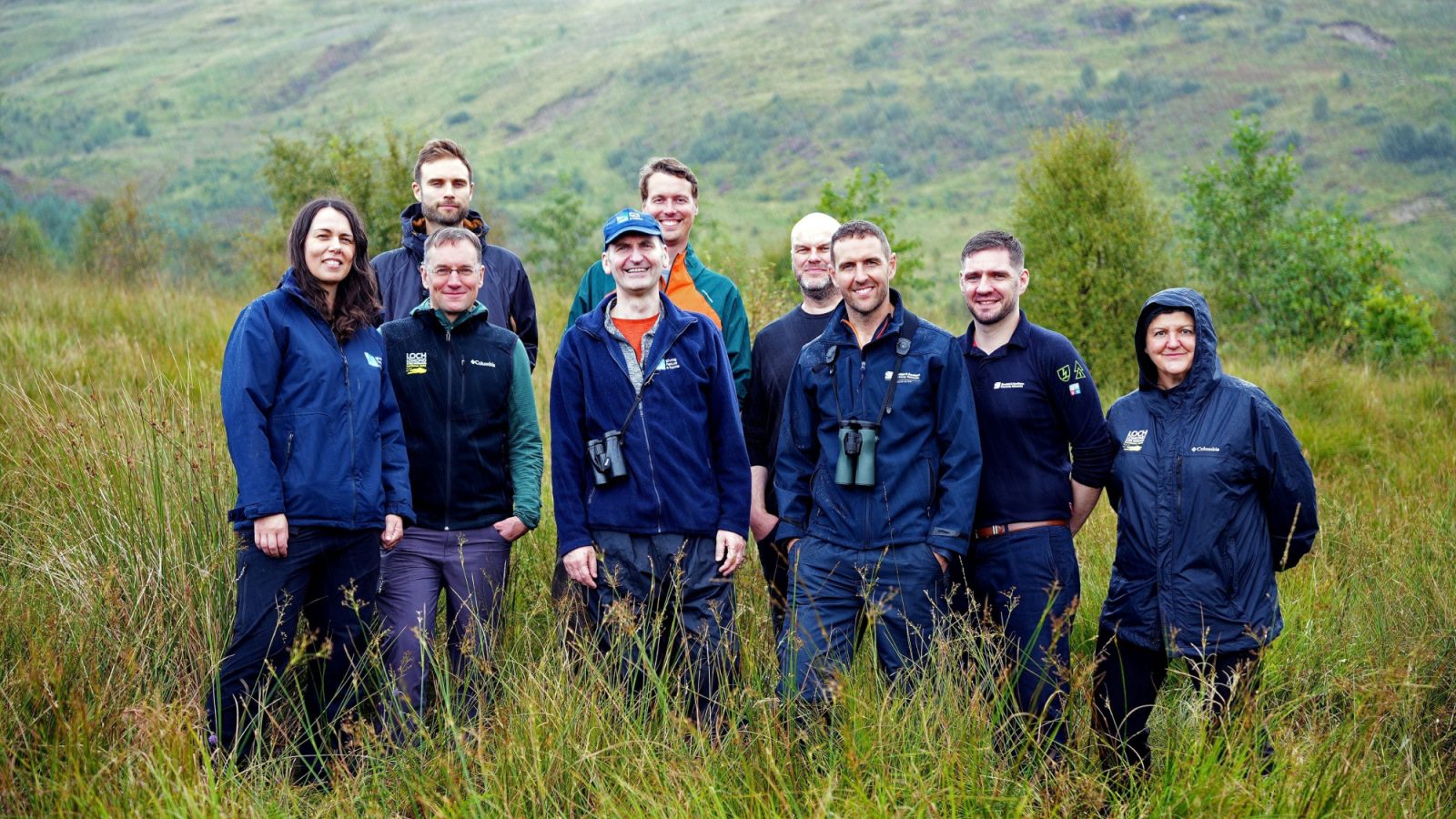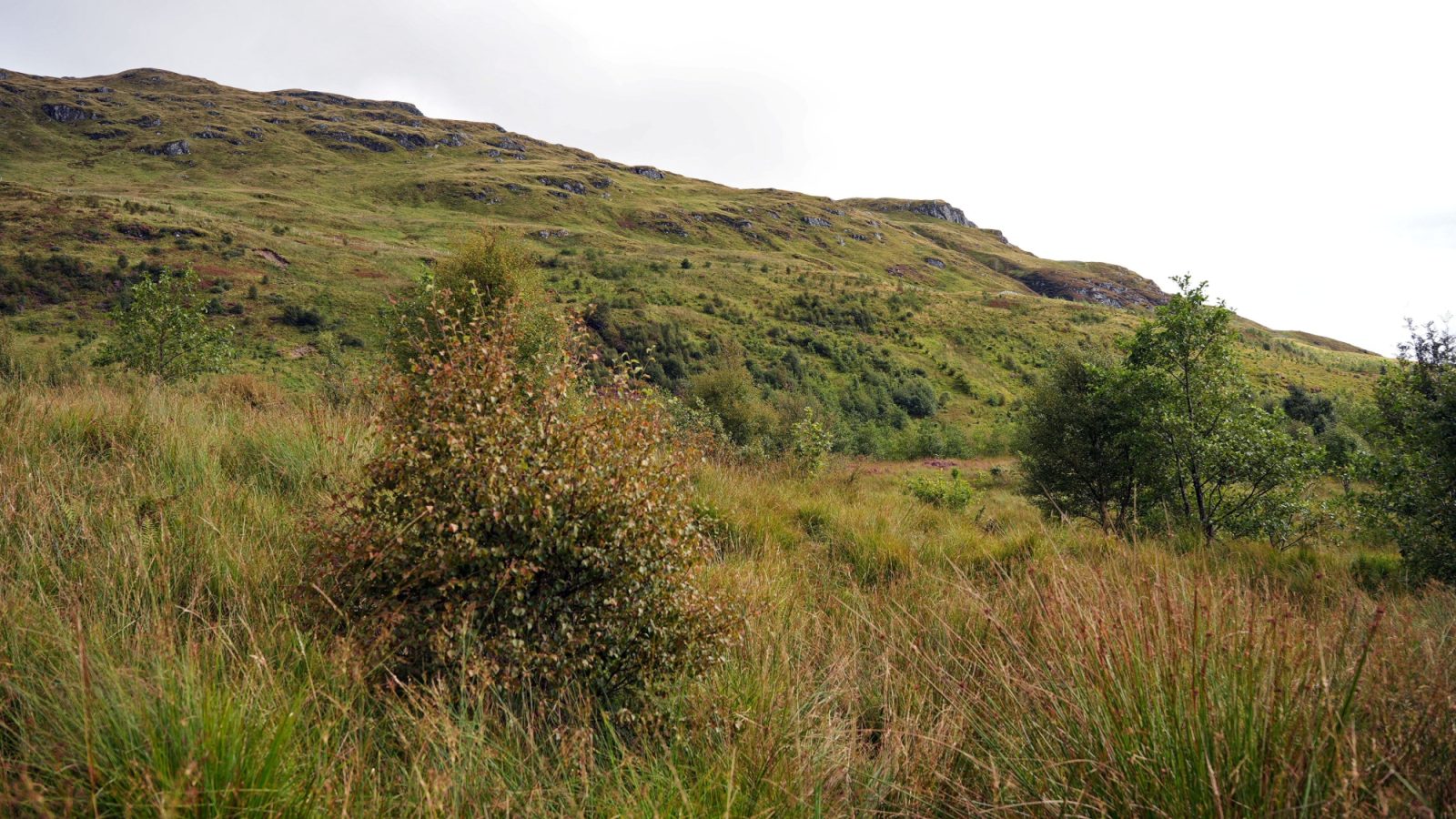A nature reserve in Scotland is set to benefit from a deal with a major electricity company which will see more than 200 hectares of habitat restored back to health.
Electricity network business SSEN Transmission and RSPB Scotland have joined forces to enhance biodiversity and restore habitats at RSPB Scotland’s Inversnaid Nature Reserve in Loch Lomond & The Trossachs National Park.
The project forms part of SSEN Transmission’s commitment to enhance biodiversity as part of the refurbishment of the Sloy-Windyhill overhead line, and will involve the restoration of 218 hectares of upland habitat, promoting ecological resilience and supporting native wildlife.
WATCH: Learn more about the project at RSPB Scotland’s Inversnaid Nature Reserve
Located on the eastern shore of Loch Lomond, RSPB Scotland’s Inversnaid Nature Reserve spans over 800 hectares and is home to diverse habitats, including rare Scottish rainforest, open moorland, upland grasslands, and wetlands. It supports an abundance of native species, from Wood Warblers to Pine Marten, and plays a vital role in providing crucial habitats in the National Park. However, historical overgrazing has reduced habitat quality, prompting an urgent need for restoration efforts.
The partnership at Inversnaid was developed to support SSEN Transmission’s biodiversity enhancement commitments on its Sloy-Windyhill overhead line project, which involves refurbishing a 14.5km section of 132kV overhead line between Sloy and Windyhill near Glenmallan. Originally built in 1951, the overhead line requires essential upgrades to ensure it can continue to operate safely and help keep the lights on.
As part of the company’s plan to invest at least £22 billion in Scotland’s electricity transmission network between 2026 and 2031, SSEN Transmission is committing at least £100 million to nature restoration. This includes over 5,000 hectares of industry-leading land and marine initiatives, making them the largest single investor in nature restoration in Scotland. Beyond enabling net zero, this investment will support jobs, boost the economy, and enhance biodiversity, demonstrating that infrastructure development and nature restoration can go hand in hand.

Members of RSPB Scotland Loch Lomond The Trossachs National Park and SSEN Transmission at the Inversnaid Reserve
A boost for Black Grouse and Golden Eagle
Biodiversity enhancement projects are generally considered to require considerably longer timeframes due to the complex nature of habitat management. However, this partnership has allowed a bespoke and targeted habitat management plan to be implemented at a large scale over a 10-year period, which will greatly enhance and diversify the habitat. Through reducing grazing pressures and removal of Invasive Non-Native Species, SSEN Transmission and RSPB Scotland aim to create a healthier, more balanced ecosystem that supports native species such as Black Grouse, Golden Eagles, and a host of scarce invertebrates.
The conservation work will also strengthen links to the wider ecological context, including the Great Trossachs Forest National Nature Reserve and the Park’s Future Nature Roadmap.
Key initiatives include:
- Habitat restoration – improving vegetation structure in the upland areas of the reserve by promoting a more diverse upland habitat mosaic consisting of acid grassland, heathland and regenerating native woodland. Greater complexity in the structure and composition of these areas will increase opportunities for native wildlife.
- Invasive species removal – targeting the removal of non-native species such as Rhododendron and Sitka Spruce to protect native vegetation.
- Strategic herbivore management – supporting plans to manage grazing herbivores within the area for a sustainable and positive impact on the reserve.
- Advanced monitoring technologies – annual assessments using thermal UAV technology to track herbivore activity, drone photogrammetry for habitat analysis, and biodiversity net gain (BNG) evaluations to measure biodiversity progress.
A Commitment to Long-Term Conservation
Emily Johns, Nature Strategy Manager at SSEN Transmission, said: "This partnership with RSPB Scotland reflects SSEN Transmission’s commitment to delivering sustainable infrastructure that works in harmony with the environment. We’re thrilled to see this get started and begin this nature positive approach, to protect and restore nature.
“By collaborating with RSPB Scotland, we aim to restore vital habitats, support biodiversity, and ensure long-term ecological resilience in the beautiful and ecologically important Inversnaid reserve. This project is an opportunity to make a meaningful contribution to nature conservation within such an iconic location in one of Scotland’s much loved national parks."

RSPB Scotland's Inversnaid Nature Reserve is located on the eastern shore of Loch Lomond
Anne McCall, Director of RSPB Scotland, said: “Biodiversity Enhancement offers a real opportunity to help protect and enhance nature as part of the development process. By embedding it into how we plan and deliver infrastructure, we can leave a positive legacy for Scotland’s nature and support the species that need it most.
“This wonderful partnership at RSPB Scotland’s Inversnaid nature reserve demonstrates how targeted action through Biodiversity Enhancement can help create healthier, more connected habitats. With collaboration and joined up thinking from the beginning of new projects, we can ensure that infrastructure development can play a major role in helping Scotland meet its nature recovery goals.”
Alan Bell, Natural Heritage Programme Manager with Loch Lomond & The Trossachs National Park said: “The collaboration demonstrated through the partnership between SSEN Transmission and RSPB Scotland at Inversnaid is an excellent example of the joined-up, long-term, innovative nature restoration efforts that are essential to secure a future for the National Park, in which people and nature thrive.
“This marks the first significant off-site biodiversity enhancement project to be secured via the planning system since our National Park Partnership Plan (NPPP) was published last year. The planning system has a critical role to play as part of our collective efforts to meet the ambitious targets set out in our NPPP, working alongside partners, communities and landowners to halt the decline in nature by 2030 and deliver widespread restoration of nature across the National Park by 2040.
“We very much welcome the announcement of this partnership between SSEN Transmission and RSPB Scotland to deliver significant biodiversity enhancement in the National Park and look forward to working with them over the course of the 10-year project.”
SSEN Transmission will provide regular reports on restoration efforts to the Loch Lomond and Trossachs National Park Authority, ensuring transparency and accountability in meeting biodiversity objectives.
SSEN Transmission remains dedicated to supporting biodiversity net gain across all of their sites in the north of Scotland, ensuring that protected species continue to flourish in their natural environment. This means leaving nature in an even better place than when they started, leaving a positive environmental legacy across all their sites.
Learn more about SSEN Transmission’s nature restoration strategy here: https://www.ssen-transmission.co.uk/about-us/sustainability/sustainability-nature/